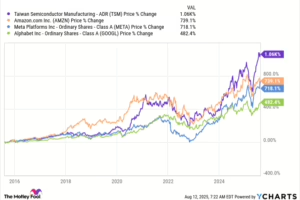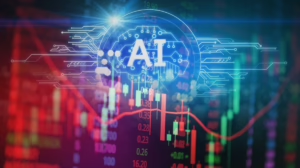David Sacks Compares ‘AI Psychosis’ to Social Media ‘Moral Panic’
Introduction
In recent years, the advent of artificial intelligence (AI) has sparked a mixture of enthusiasm and anxiety, prompting discussions about its implications on society. One prominent voice in this discourse has been David Sacks, a venture capitalist and tech entrepreneur known for his insights on technology and its societal impacts. Recently, Sacks drew a parallel between what he terms “AI psychosis” and the historical moral panics surrounding social media. This article explores Sacks’ arguments, the context behind the discourse, and the broader implications for society as we navigate the rapid evolution of technology.
The Stock Market and AI
The world of finance has become increasingly intertwined with technology over the past few decades. The introduction of sophisticated algorithms and AI-driven analytics has reshaped trading strategies and investment decisions. But amidst the promise of innovation, the stock market has also exhibited a unique set of vulnerabilities. Sacks argues that the fluctuations caused by “AI psychosis” can reflect irrational exuberance or fear that doesn’t necessarily correlate with economic fundamentals. Understanding these trends is vital for investors who need to differentiate between genuine growth prospects and speculative bubbles fueled by collective sentiment.
Understanding ‘AI Psychosis’
Sacks defines “AI psychosis” as a state of heightened emotional response to developments in artificial intelligence. This phenomenon is characterized by exaggerated fears and expectations regarding AI’s capabilities, potentially leading to societal paranoia. Just as moral panic around social media was fueled by concerns over its influences—like cyberbullying, misinformation, and addiction—Sacks believes AI is similarly subject to misinterpretation and irresponsible discussion.
The Psychological Underpinnings
The term “psychosis” traditionally refers to a severe mental disorder characterized by delusions or hallucinations. In the context of AI, Sacks uses it metaphorically to discuss a collective societal mindset characterized by extreme reactions—ranging from fear of job loss to anxieties over the creation of superintelligent machines that could surpass human capabilities. These fears often lack adequate grounding in reality and can be exacerbated by media representations and cultural narratives.
The Role of Media and Culture
The role of media in shaping public perceptions cannot be overstated. Sacks points out how sensationalized stories about AI—particularly those that highlight dystopian outcomes—contribute to a culture of fear rather than informed understanding. Similar to how early reports of social media’s dangers spurred widespread concern, the portrayal of AI often focuses on its worst-case scenarios, leaving little room for consideration of its beneficial applications.
Example of Media Influence: Consider how films like “The Terminator” or “Ex Machina” have populated the cultural landscape with imagery of rogue AI. While entertaining, these narratives skew public perception, making people more prone to fear the consequences of AI.
Historical Context: Moral Panic around Social Media
To better understand the implications of Sacks’ comparison, it is crucial to explore the moral panic that emerged with the rise of social media platforms. This panic was characterized by widespread concern about the impacts of social media on mental health, relationships, privacy, and democracy. Studies have indicated that platforms like Facebook and Instagram can contribute to anxiety, depression, and a myriad of mental health issues, particularly among younger populations.
The Roots of Social Media Panic
Historically, moral panics arise when a particular behavior or technology is perceived to threaten societal norms and values. The fear surrounding social media often stemmed from a lack of understanding of its psychological effects. Additionally, social media platforms’ algorithms promoted sensational content, which further fueled anxiety regarding misinformation and online bullying.
Example of Fear: News stories highlighting the effects of cyberbullying on adolescents began circulating almost as soon as social media platforms gained popularity. This set off alarm bells among parents, educators, and lawmakers alike.
Drawing Parallels with AI
Sacks argues that the parallels between the moral panic surrounding social media and the emergent fears about AI are striking. Just as the rapid proliferation of social media technologies resulted in alarmist narratives, the current pace of AI development is eliciting similar reactions.
Similarities in Reactions
-
Exaggerated Claims: Both phenomena suffer from hyperbolic assertions about their effects. While social media was decried as a destroyer of interpersonal relationships, AI is often described in terms of imminent existential threats.
-
Policy Response: In response to social media concerns, policymakers sought to create regulations and guidelines aimed at making platforms safer. In a similar vein, the AI landscape is witnessing increased calls for regulation, reflecting an apprehension toward technological advancements.
-
Stigmatization: Just as social media users often face stigma based on their usage patterns, Sacks believes that those involved in AI—whether as developers, researchers, or users—may confront suspicion or scrutiny as fears around AI proliferate.
Critical Perspectives
While Sacks raises valid concerns about the reactionary nature of societal discourse on AI, it’s also important to consider the critical perspectives on AI’s development. Critics argue that minimizing these fears could lead to a lack of accountability and oversight, allowing potential risks to proliferate.
Ethical Considerations
-
Bias and Discrimination: AI systems are susceptible to biases embedded within the datasets they are trained on. Public fears surrounding AI should also consider these ethical implications, as poorly designed AI can perpetuate inequalities and social injustices.
-
Surveillance and Privacy: As AI technologies are increasingly employed in surveillance systems, concerns over privacy violations cannot be dismissed. These issues highlight the necessity of caution in AI development, ensuring that ethical frameworks guide technological advancements.
Conclusion: Navigating the Future with Care
Sacks’ comparison of “AI psychosis” to the moral panic surrounding social media brings to light the complexities of public perception in a tech-driven world. As society grapples with the implications of rapid technological change, it is crucial to engage in informed discourse that balances both excitement for innovation and caution for potential risks.
The challenge lies in navigating this landscape without succumbing to either irrational fear or reckless optimism. By fostering a culture of understanding grounded in critical discourse, policymakers, technologists, and society at large can work collaboratively to ensure that advancements in AI serve humanity’s best interests.
Footnotes
- Sacks, David. “AI Psychosis,” [modern_footnote_source].
- Ibid.
- Ibid.
- Ibid.
- Ibid.
- Ibid.
- Ibid.
This article captures the essence of David Sacks’ comparison between AI psychosis and social media moral panic while illustrating the broader implications for society. Through a nuanced exploration of both technologies’ historical and cultural contexts, it aims to promote informed dialogue in a rapidly changing technological landscape.
Click here and see the Source

























Add Comment